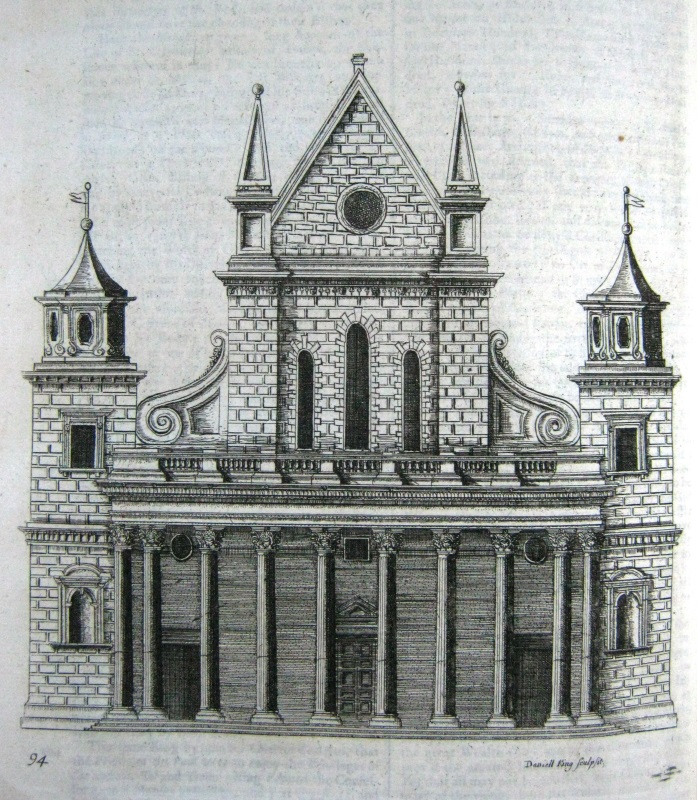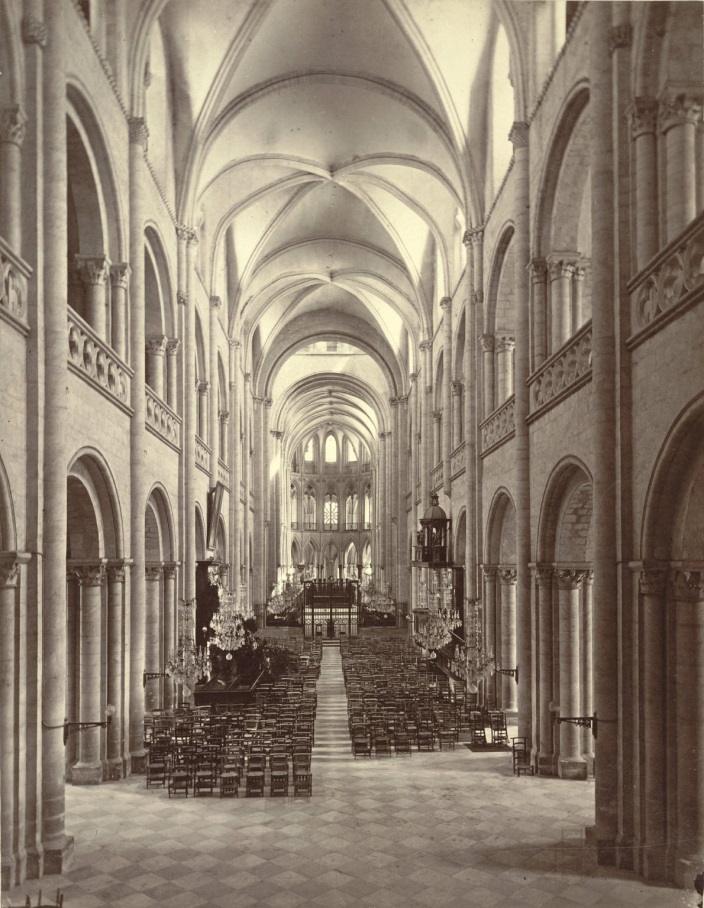Archivist Lawrence Barker has added a new item to our Cabinet of Curiosities. Read on to find out more about one of the antiquarian treasures in our Local Studies Library.
At the end of January, we celebrated our Local Studies Library moving into the 21st century when we added the book catalogue to Essex Archives Online.
So, for the next document featured in our Curiosity Cabinet, we thought we would choose one of the antiquarian treasures in the Library, our copy of Monasticon Anglicanum compiled by William Dugdale, originally published in Latin in 1655 but republished in 1718 in an abbreviated English version.

One of the most intriguing features of the book is the inclusion of engravings of cathedrals and collegiate churches as they appeared at the time, including old St Paul’s Cathedral in all its medieval glory ten years before the great fire of London destroyed it. From 604, when Mellitus was made first Bishop of London, up to 1846 when it transferred to the Diocese of Rochester, Essex was part of the Diocese of London. So, St Paul’s was the cathedral of Essex for well over a thousand years.

A view from the book of the north side of the cathedral (above) shows the eastern half still sporting its Decorated Gothic windows, featuring early Geometric plate tracery dating from the second half of the 13th century. The view of the east end (below left) shows that there was once a fine rose window echoing those of the transepts of Notre Dame in Paris.
In contrast, the western half (above) shows the radical transformation carried out at the hands of Inigo Jones, who was commissioned by James I in the 1630s to carry out a restoration using an early Classical style. A view of the west front (below right) shows that Jones had even added a classical portico. Even at the time, the overall effect was thought a little incongruous alongside the Gothic style of the rest of the building!

East end of St Paul’s with rose window 
West end of St Paul’s showing portico
If you had walked under the portico and through the west door into the cathedral, however, you would have entered into the original Norman nave. Construction of the cathedral began in 1087, at the end of William I’s reign. The view of the nave from the book (below left) reveals the cathedral’s provenance, as the arrangement of clustered columns in the arcade with the large tribune above resembled the nave of William’s Abbaye-aux-Hommes in Caen, Normandy (below right).
-

Interior nave of old St Paul’s -

Interior nave of Abbaye-aux-Hommes. Image from Cornell University Library.
The Abbaye-aux-Hommes was William’s final resting place – that is, one of his thigh bones remains there; the rest of his bones were scattered during the French Wars of Religion in 1562. But St Paul’s ended up being a good deal larger than the Abbaye-aux-Hommes. By the time it was completed, Old St Paul’s was one of the largest churches in Christendom. It was nearly 600 feet long, a length only exceeded by the enormous abbey at Cluny in Burgundy, and 100 feet wide. It also had a spire of 489 feet, about 80 feet taller than that of Salisbury, but this caught fire and crashed through the roof of the nave in 1561.
As the book’s title suggests, the Monasticon is primarily a history of the monasteries in England and Wales, and, as such, provides a useful starting point for a study of the various monastic institutions in Essex. Of course, at the time it was published, most of those monasteries had been suppressed during the Reformation. To find out more about Essex’s experience of the dissolution of the monasteries, come to Ken Crowe’s talk on the dissolution in south west Essex (focussing on Barking Abbey and Stratford Langthorne Priory) at our upcoming ‘Essex on the Edge’ conference on Saturday 18th May.
Find out more about our ‘Essex on the Edge’ conference and book tickets.
The Monasticon Anglicanum book – open at the page showing the image of St Paul’s – will be on display in our Searchroom until the end of May.
